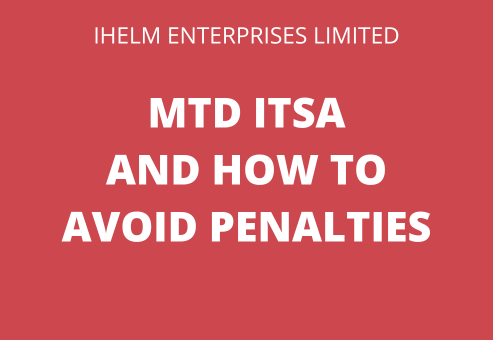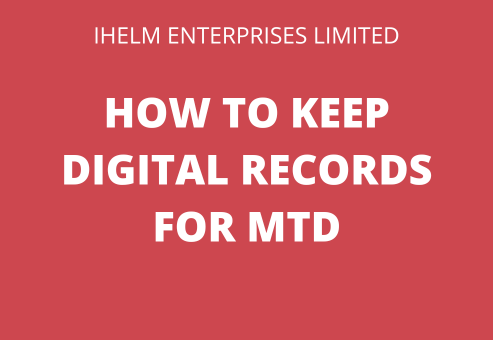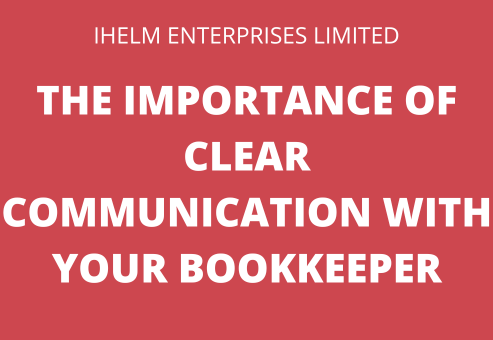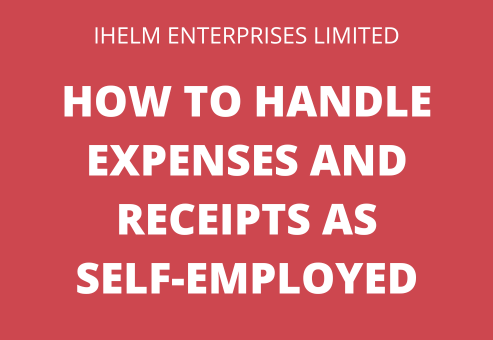During September’s Facebook Live, I provided a proactive session focused on moving beyond historical bookkeeping. I covered how to create a simple but effective budget for the upcoming tax year, the basics of cash flow forecasting to anticipate future shortfalls, and how to use these financial tools to make strategic business decisions, set realistic goals, and secure potential funding. My objective was to empower business owners to move forward from reactive bookkeeping to proactive financial planning, using budgets and forecasts to set goals and control their financial future.
Beyond Just Recording History
When you are completing your accounts, you are looking at transactions that have already occurred and just recording that information. When you budget and use cash flow forecasting, you are looking into the future and planning for how to make things happen. It is the difference between looking in the rear-view mirror and looking at the sat-nav to see where you are going.
What is a Budget?
Budgeting looks at the financial direction of where a business owner wants to take their business. It provides a financial roadmap for what a business wants to achieve for a particular period of time.
When you create a budget, you are creating a detailed plan of your expected income and expenses over a period of time (for example, the next 12 months). It will include an estimate of income and expenses, expected cash flow, and expected debt reduction. A business will typically re-evaluate its budget regularly. A budget will give you a baseline which you can then compare actual results to in order to determine how they vary from the expected performance. It can provide you with valuable insight into how your business is actually doing in terms of the cost of running the business, and you will be able to improve the day-to-day running of the business, as well as be prepared for any potential problems.
How do I create a Simple Budget?
Depending on the accounts software you are using, you may be able to create your budget by pulling the historical data through and pre-populating the budget based on that information. However, you can create a very simple budget using spreadsheets. There are many free templates online that can be used to get you started. You will set up different sections on the spreadsheet to cover Income, Fixed Costs, Variable Costs, and One-Time Costs. Each type of income/expense will be entered on its own row, with the figures going across the spreadsheet in the columns.
If you have been in business for a period of time, the best thing to do is to start with your historical data, so the previous year’s profit and loss statement. It will give you a starting point for what figures to use.
The first thing you want to look at is your income. Break it down into the different income streams you have – for example, different products, or different sales avenues (website, bricks and mortar shop, Amazon, Etsy), or different locations. Estimate what your revenue will look like going forward, taking into consideration any seasonal changes, any recurring income that comes in from clients, and any future projects that you have planned.
The next thing to look at is the costs associated with running your business. Some of these costs will be fixed – for example, rent, insurance, software fees, payroll-related expenses (National Insurance, wages) – any expense where the amount paid is the same for the time period you are looking at. Variable costs will be things like stock, travel expenses, marketing costs, utilities – any expenses that fluctuate in both amount and how often they occur.
The last set of costs you want to look at are the ones that are considered a one-off or unexpected. You would include things like purchasing equipment, moving office, legal fees, and equipment repairs. These are expenses that you have a contingency for, but may not necessarily happen.
When you enter figures into your budget, look at the historical data, but also think about the plans you have for the business. For example, are you planning a big marketing campaign? If so, adjust the figure for marketing costs within the budget to see how it impacts your profit. If you have seasonal changes, ensure that the figures for those months reflect that increase in sales or expenses.
You want to ensure that you are setting realistic targets for your sales – be conservative with the figures you are hoping to achieve. Remember, this is a budget, and not what will actually happen. It is just a tool to help you identify where you perhaps need to cut spending, or increase it, for certain items to help you achieve your goals.
What is Cash Flow Forecasting?
To put it simply, cash flow is the movement of money in and out of a business over a specific period. The profit of a business is not the same as the amount of money that you have in your bank account. If you have a positive cash flow, that means more money is coming into the business than is going out and indicates that a business is healthy. If you have a negative cash flow, you need to look at the spending patterns for the business and work out either how to increase the money coming into the business from sales or where you can cut back on the spending. Understanding the cash flow of your business is crucial, as even a business that is profitable can still fail if it doesn’t have enough money in the bank to cover expenses.
The purpose of a cash flow forecast is to help a business owner predict any future cash shortfalls so that they can act before they happen. It can also help to predict any future cash surpluses and allow you to plan for how to invest those funds or use them to grow your business.
To create a simple cash flow forecast, the first thing to do is to choose your planning period. This could be weekly, monthly, or quarterly. Plan as far ahead as you can based on your cash flow cycle and try to ensure your figures are as accurate as possible.
For each of the weeks or months in your time period, you will need the following information:
- The opening balances on your various bank accounts (main bank, PayPal, cash)
- The amount of sales you will have coming in (if some of the income isn’t regular, you can try to predict what it will be by looking at the figures from the previous year, if applicable) – ensure that you are putting the figures into the correct time period based on when the payments will clear in your bank account
- any money you receive from tax refunds, loans, interest, or grants
- a list of your expenses (rent, wages, stock, bank fees, loan repayments, utilities, advertising, tax bills)
After you have the information to hand, you can then create a cash flow forecast in a spreadsheet. Enter the time period across the top of the spreadsheet, with each week/month being in its own column. In the first column of the spreadsheet, put the names for each of your bank accounts in a row of its own, and then below that list each type of income and expense in its own row.
At the end of the section where you have your income, add in a new row and label it “Net Income”. The figures in this row will be the total of all your income for that time period. At the end of the section where you have your expenses, add in a new row and label it “Net Expenses”. The figures in this row will be the total of your expenses for that time period. For the final row, you want to have this figure be the “Opening balances”, plus the “Net Income”, minus the “Net Expenses”. That figure will tell you whether you have a positive cash flow (you have more money coming into the business than you are spending) or a negative cash flow (you are spending more money than you have coming into the business).
For each week/month, you want to enter the figures for the different income and expenses in the appropriate row and column. You will need to ensure that the “opening balances” for each of your bank accounts are updated for the beginning of each time period, as they will change. The figures you enter into the cash flow forecast can be updated as and when they are needed.
You can find templates online to use for creating cash flow forecasts using spreadsheets, and depending on the accounts software you use, it might be able to create a forecast for you based on the information you have already entered into the accounts.
How do I use a budget and cash flow forecast for my business?
Once you have your budget and cash flow forecast set up, you can use the information to help you plan for the future.
They can help you to set goals for your business – for example, you may want to start taking on staff, so by using the budget and your cash flow forecast, you will be able to determine when you will be able to afford to hire staff. These reports are also helpful in determining whether a marketing campaign or a particular product has increased your sales.
If you are trying to secure funding for your business, a lot of banks and investors will ask for a cash flow forecast. They want to be able to see whether you will be able to afford the repayments and whether making an investment in your business is a good idea.
Another way these two tools are useful is that they allow you to compare your actual monthly results with your budget, so you can see where there were differences and then work out why. It can help to highlight if a particular product or service is no longer what your clients are looking for.
This month is the perfect time to plan. If you’d like help setting up a budget or a forecast for your business, please feel free to email me.










